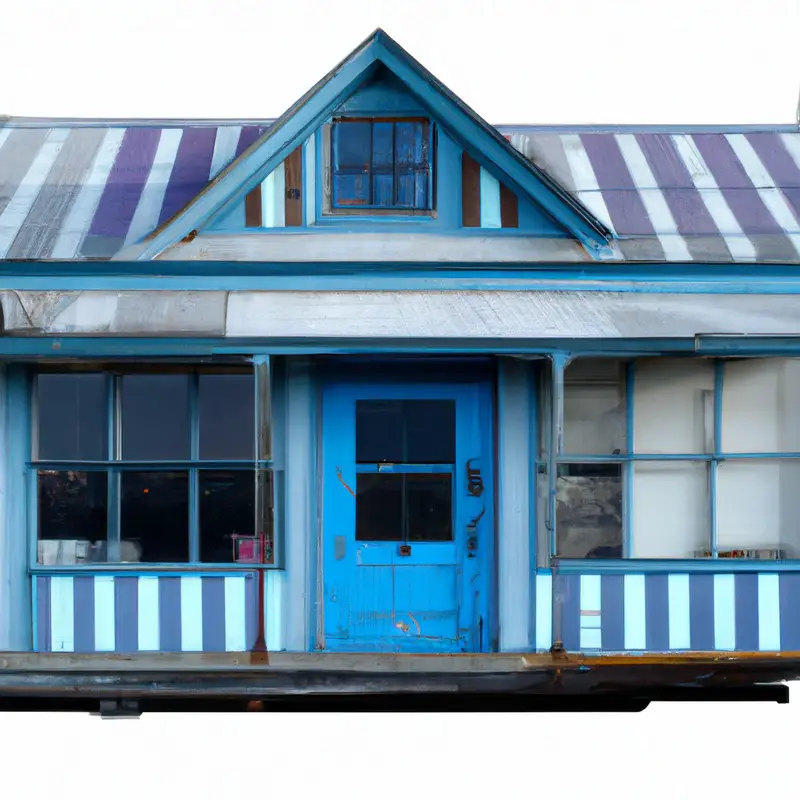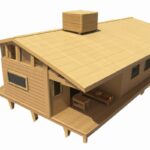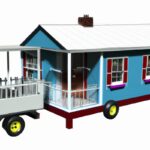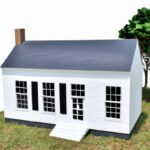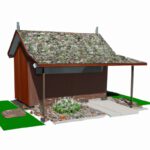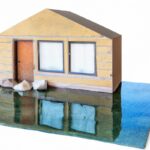Key Takeaways:
- Local zoning regulations determine the legality of tiny houses in specific areas.
- Building codes and minimum size requirements may limit the permissibility of tiny houses.
- Some jurisdictions have specific regulations or exemptions for accessory dwelling units (ADUs) as a type of tiny house.
- Researching local laws and consulting with local authorities is essential to determine the legality of tiny houses in your area.
Imagine living in a cozy sanctuary that perfectly suits your needs, with every inch thoughtfully designed to maximize space and simplify your life. That’s the allure of tiny houses.
But before you dive into this minimalist dream, there’s an important question to ask: are tiny houses legally allowed in your area?
In this blog, we’ll unravel the legal considerations surrounding tiny homes and explore the potential obstacles you may face. From zoning laws to building codes, we’ll provide you with valuable insights and strategies to help you navigate the legal landscape and turn your tiny house dreams into reality.
So, let’s get started and uncover the legal journey of tiny house living.
Understanding Tiny Houses
What is a Tiny House?
A Tiny House is a small, fully functional dwelling that typically ranges between 100 and 400 square feet. They are designed to maximize space efficiency and minimize environmental impact.
These houses are built with careful attention to design and functionality, often using sustainable materials.
The compact size encourages a simpler, decluttered lifestyle and can be customized to meet individual needs and preferences. Tiny Houses can be mobile or stationary, offering flexibility and affordability.
They are becoming a popular housing option for those seeking a minimalist lifestyle or looking to downsize.
Benefits of Living in a Tiny House
Living in a tiny house has numerous benefits.
Firstly, it allows for a simpler and more minimalist lifestyle, helping to reduce clutter and promote a sense of freedom.
Secondly, tiny houses are generally more affordable than traditional homes, making them a great option for people on a budget.
Thirdly, they are often more environmentally friendly, using fewer resources and producing less waste.
Additionally, tiny houses can be more mobile, allowing you to travel and explore new places.
Finally, the smaller space can promote closer relationships and a stronger sense of community.

Popular Tiny House Movements
Popular Tiny House Movements:
- Minimalist Movement: Many people are drawn to tiny houses as a way to simplify their lives and reduce their environmental footprint. The minimalist movement promotes living with less and prioritizing experiences over possessions.
- Financial Freedom: The tiny house movement is also popular among those seeking financial freedom. By downsizing their living space, individuals can significantly reduce their expenses and potentially live mortgage-free or with lower housing costs.
- Sustainable Living: Tiny houses are often built with sustainable materials and designed to be energy-efficient. This resonates with individuals who prioritize environmentally-friendly lifestyles and want to minimize their impact on the planet.
- Flexibility and Mobility: Some people choose to live in tiny houses as a way to embrace a nomadic lifestyle. These individuals may opt for tiny houses on wheels, allowing them to easily move their homes to different locations.
- Community Living: Tiny house communities have emerged as a way for like-minded individuals to come together and create supportive, close-knit communities. These communities often promote shared resources, social connections, and a sense of belonging.
Legal Considerations for Tiny Houses
Zoning Laws and Regulations
Zoning laws and regulations dictate where and how tiny houses can be legally placed. These laws vary by jurisdiction and can impact the size, location, and use of a tiny house.
Understanding your local zoning laws is essential before starting any tiny house project.
Zoning laws may classify tiny houses as permanent dwellings or recreational vehicles, and may require specific permits or compliance with building codes. It’s important to research and comply with these regulations to avoid legal issues and ensure a smooth process for your tiny house endeavors.
Building Codes and Permit Requirements
When it comes to building a tiny house, it’s important to understand the building codes and permit requirements in your area. These regulations vary from place to place, so it’s crucial to research and comply with them.
Building codes ensure the safety and structural integrity of your tiny house, while permits grant you legal permission to construct or occupy the dwelling.
It’s essential to familiarize yourself with the specific codes and requirements set by your local government, as they may have minimum size standards and other specifications for tiny houses. It’s always best to consult with local authorities to ensure that you’re following the correct procedures.
Minimum Square Footage Requirements
Minimum Square Footage Requirements vary depending on the location and the specific regulations set by local zoning laws and building codes.
Some areas may have a minimum square footage requirement for residential dwellings, while others may not.
It’s important to research the regulations in your specific area to ensure compliance.
Keep in mind that meeting the minimum square footage requirement may be necessary for obtaining permits and complying with zoning laws when building or placing a tiny house.
Reach out to the local planning department or consult with real estate professionals for guidance on the specific requirements in your area.
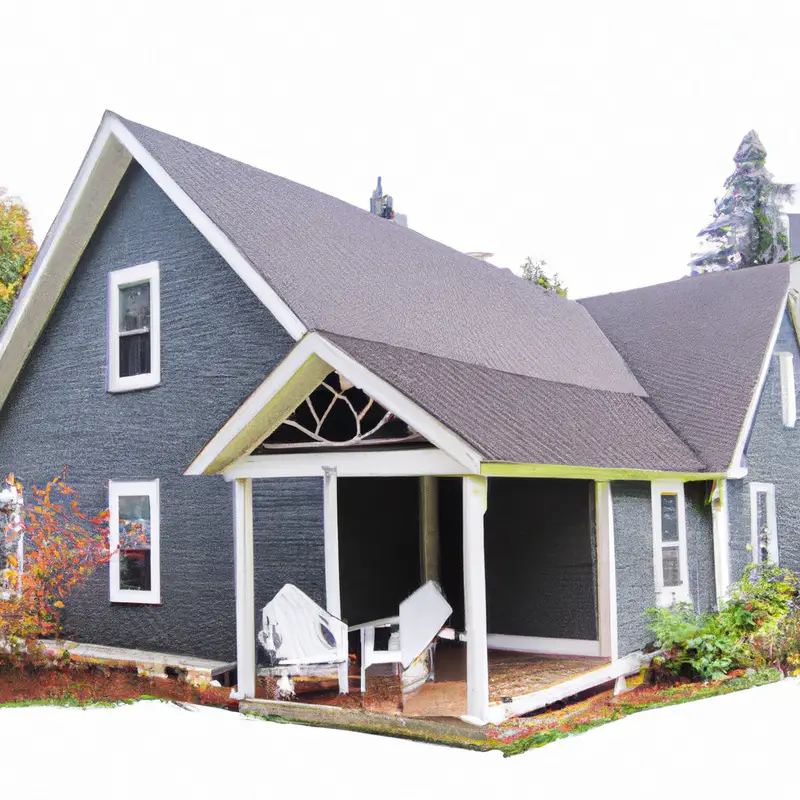
Researching Local Regulations
Contacting the Local Planning Department
Contacting the Local Planning Department is essential when researching the regulations for tiny houses in your area. They are the experts on zoning laws and building codes, and can provide you with the information you need to determine if tiny houses are allowed.
Reach out to them by phone or visit their office in person.
Be prepared with specific questions about minimum square footage requirements, permits, and any other concerns you may have. Bringing pictures or plans of your tiny house can also be helpful in explaining your project.
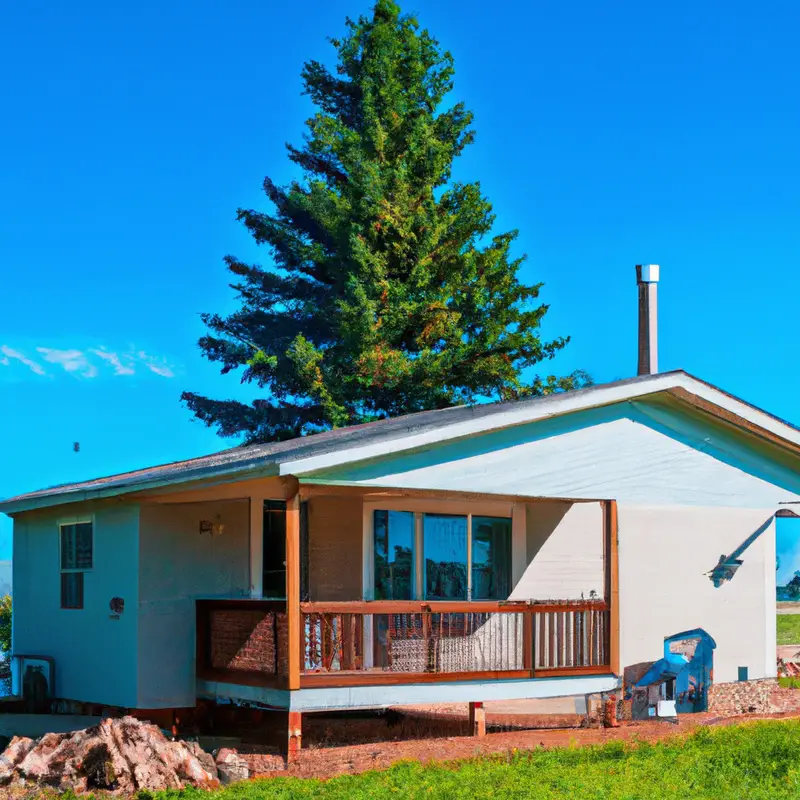
Consulting with Real Estate Professionals
If you’re considering a tiny house and want to know if it’s legal in your area, consulting with real estate professionals can be a helpful step.
Real estate agents have experience and knowledge of local zoning laws, building codes, and regulations.
They can provide you with information about the legality of tiny houses in your area and guide you through the process.
It’s also beneficial to reach out to real estate attorneys who specialize in land use and zoning issues.
These professionals can offer legal advice and ensure that you are following all the necessary regulations.
By consulting with these experts, you can gather the necessary information to make informed decisions about your tiny house journey.
Alternative Options for Tiny House Living
Tiny House Communities
Tiny House Communities are a great option for those looking to embrace the tiny house lifestyle.
These communities are specifically designed to accommodate tiny houses and offer a supportive and like-minded community.
Living in a tiny house community provides a sense of belonging, shared resources, and the opportunity to learn from others.
Additionally, many tiny house communities provide amenities such as communal spaces, gardens, and workshops.
Being a part of a tiny house community can be a rewarding and fulfilling experience for those seeking a simpler way of living.
RV Parks and Campgrounds
RV parks and campgrounds can be a great option for tiny house living. Many of them allow tiny houses on wheels and offer amenities like hookups for water, electricity, and sewage.
They also provide the opportunity to be part of a community of like-minded individuals who appreciate the simplicity of tiny living.
Keep in mind that each RV park or campground may have its own rules and regulations regarding the size and type of tiny houses they allow. It’s important to do your research and contact the specific location to ensure they can accommodate your tiny house.
Backyard ADUs and Granny Flats
Backyard ADUs (Accessory Dwelling Units) and Granny Flats are excellent options for tiny house living. These small, separate living spaces are typically located in the backyard of an existing home.
They provide an opportunity for homeowners to maximize their property’s potential by adding additional living space.
Backyard ADUs and Granny Flats can be used for various purposes, such as renting out to tenants, providing housing for family members, or simply creating a cozy guest house. They often offer similar benefits to tiny houses, including affordability, sustainability, and a minimalist lifestyle.
Consider exploring these options for a compact and flexible living arrangement.
Overcoming Legal Obstacles
Seeking Variance or Exemption
When faced with legal obstacles for tiny house living, seeking a variance or exemption can be a possible solution. A variance allows you to deviate from certain zoning or building code requirements, while an exemption grants you permission to bypass specific regulations.
To pursue a variance or exemption, reach out to your local planning department for guidance.
They can inform you of the necessary steps, paperwork, and potential fees involved. It’s important to note that the approval process may vary from one jurisdiction to another, so it’s crucial to follow your local regulations.
Forming Advocacy Groups
Forming advocacy groups can be a powerful way to create change in your community.
By joining forces with like-minded individuals, you can work together to advocate for the recognition and acceptance of tiny houses.
These groups can engage in a variety of activities, such as raising awareness, lobbying local government officials, and organizing community events.
By amplifying your voices through a collective effort, you can help pave the way for more legal and zoning options for tiny house living in your area.
Engaging with Local Government
Engaging with local government is an essential step in navigating the legal obstacles surrounding tiny house living.
I advise reaching out to your local planning department to inquire about zoning regulations specific to tiny homes.
It’s also worth consulting with real estate professionals who have knowledge of the local market.
Engaging with local government allows you to gather information, ask questions, and potentially influence decision-making.
Being proactive and respectful in your approach can help foster a positive relationship with local officials and increase the likelihood of finding a legal solution for your tiny house.
Final Verdict
Understanding the legal considerations for tiny houses is crucial before embarking on this alternative lifestyle. Zoning laws, building codes, and minimum square footage requirements vary from one area to another, making it essential to research local regulations.
By contacting the local planning department, consulting with real estate professionals, and exploring alternative options such as tiny house communities, RV parks, and backyard ADUs, individuals can overcome legal obstacles.
Seeking variance or exemption, forming advocacy groups, and engaging with local government are also effective strategies. Remember, thorough research and proactive engagement are key to successfully navigating the legal landscape of tiny house living.
Trust in the information provided throughout this article and take the necessary steps to enjoy the benefits of living in a tiny house within your area.
